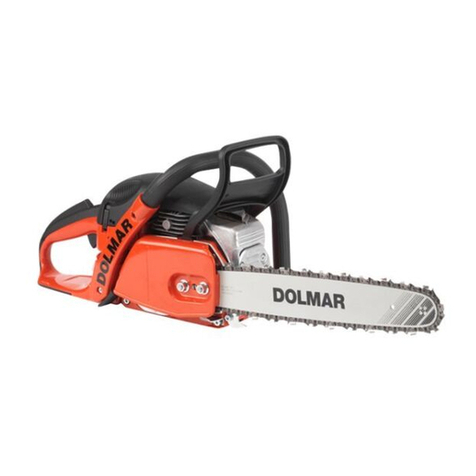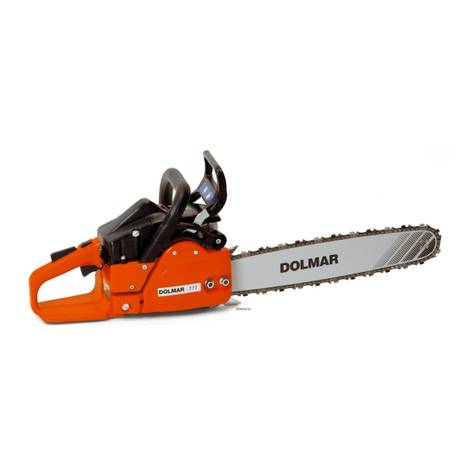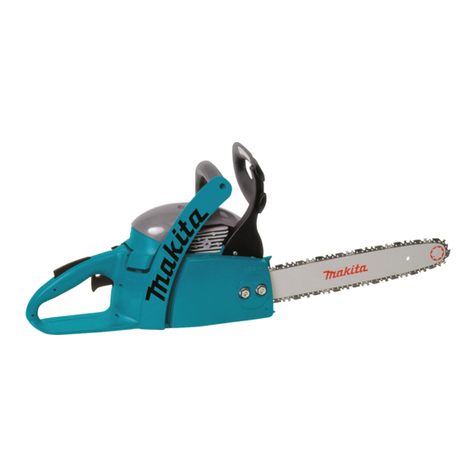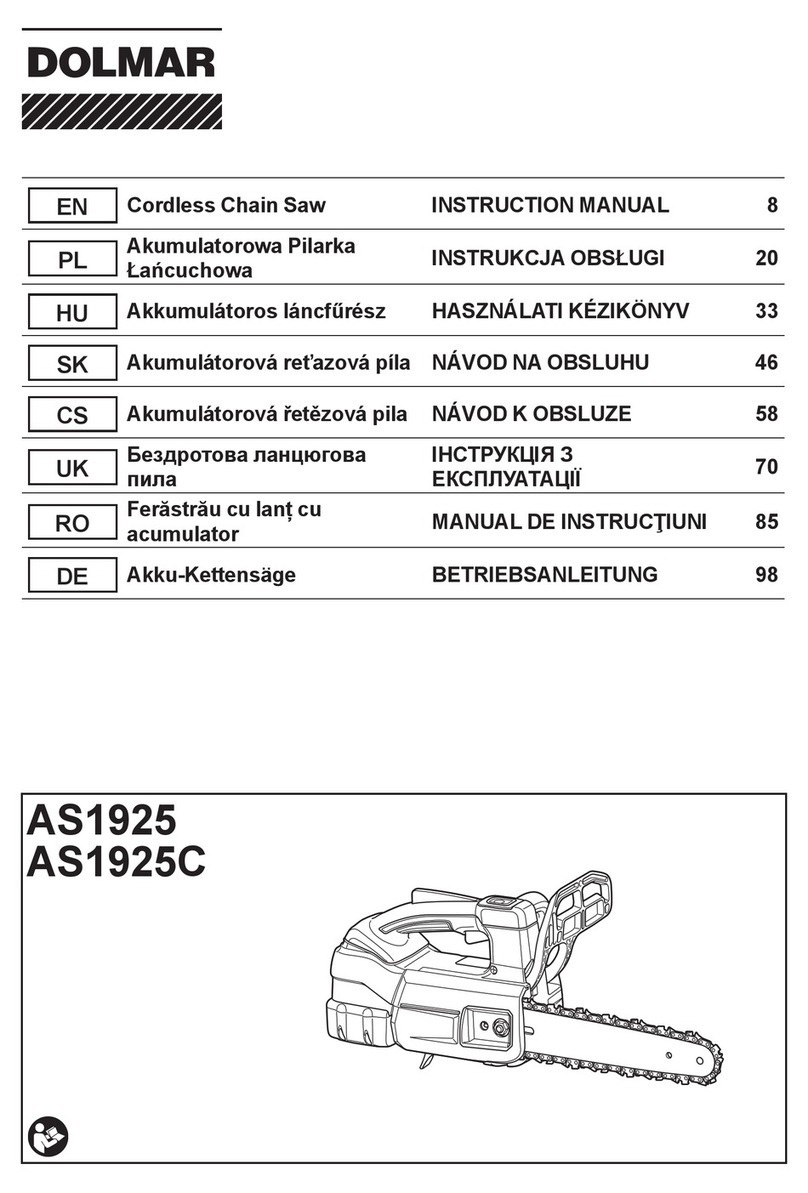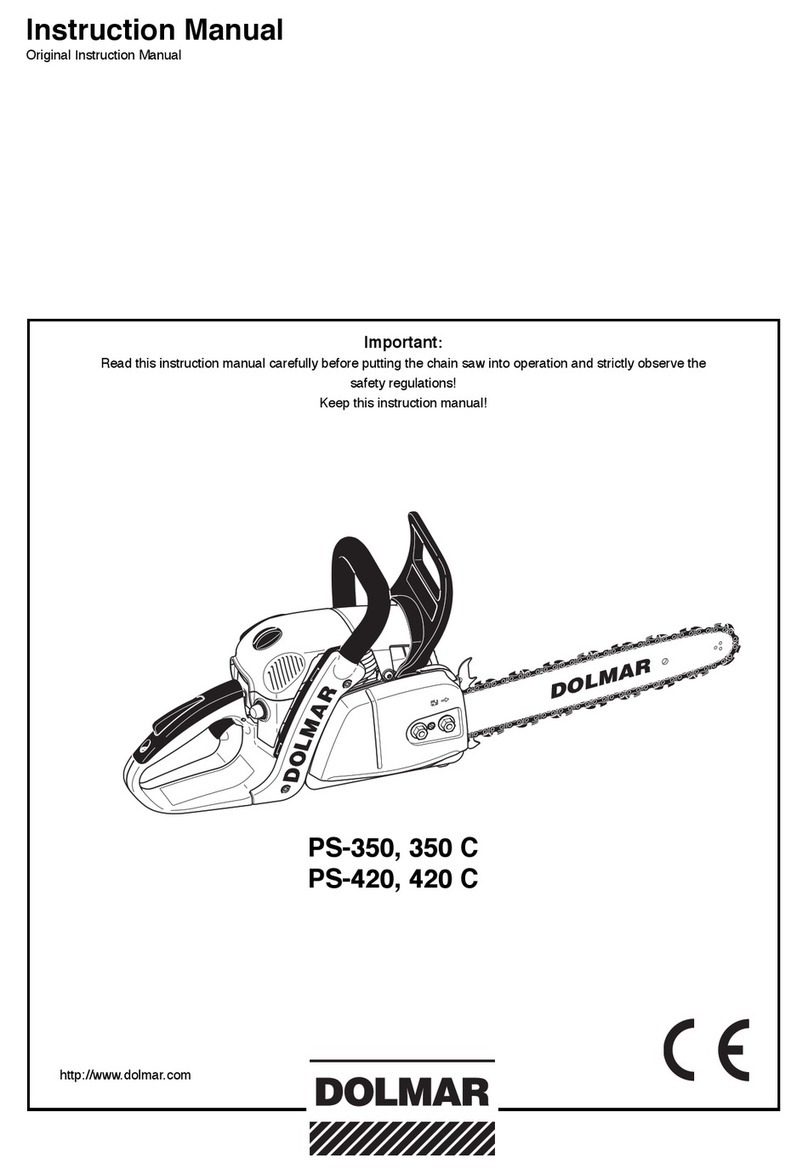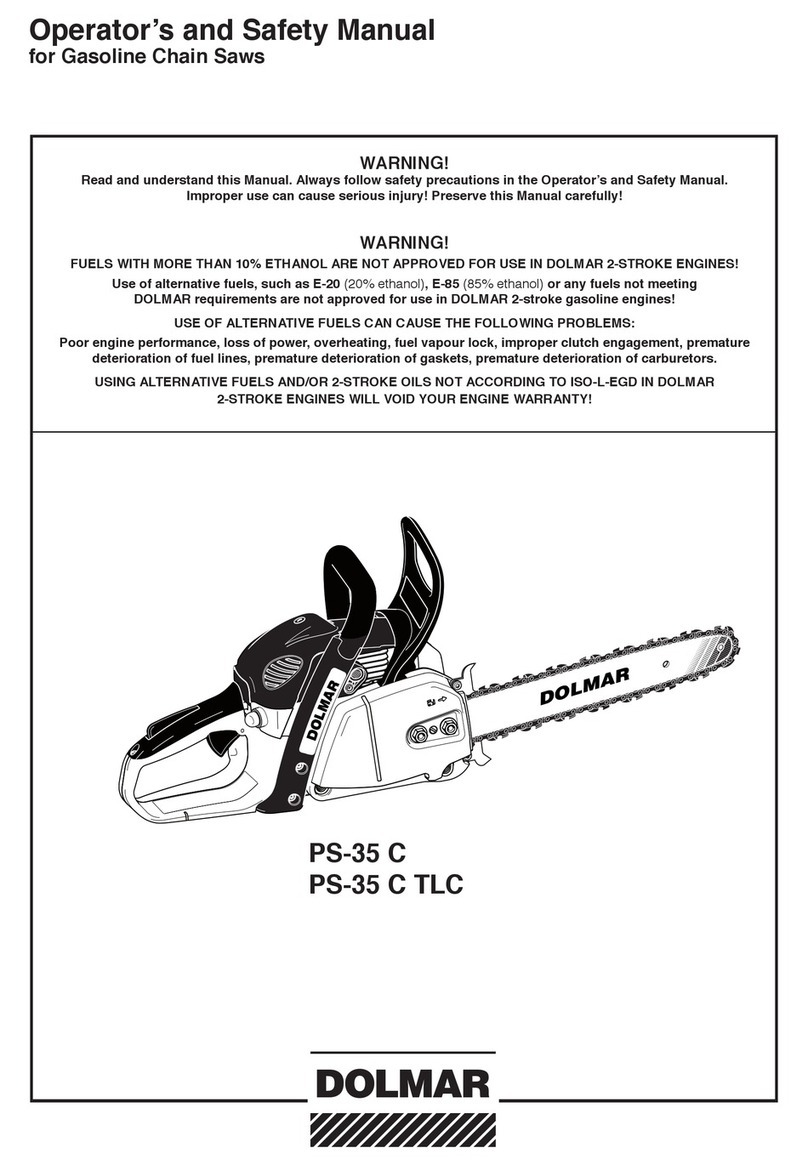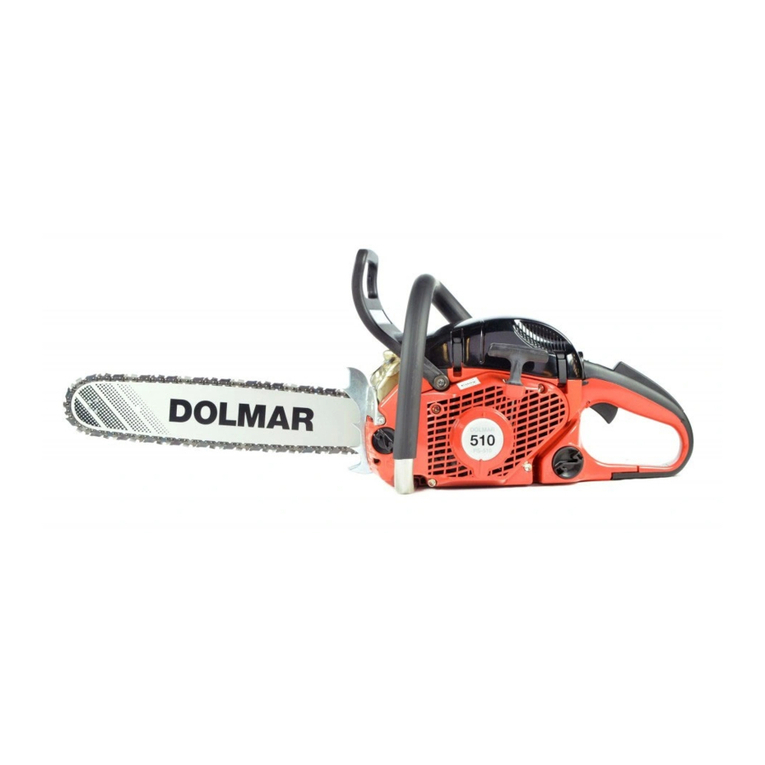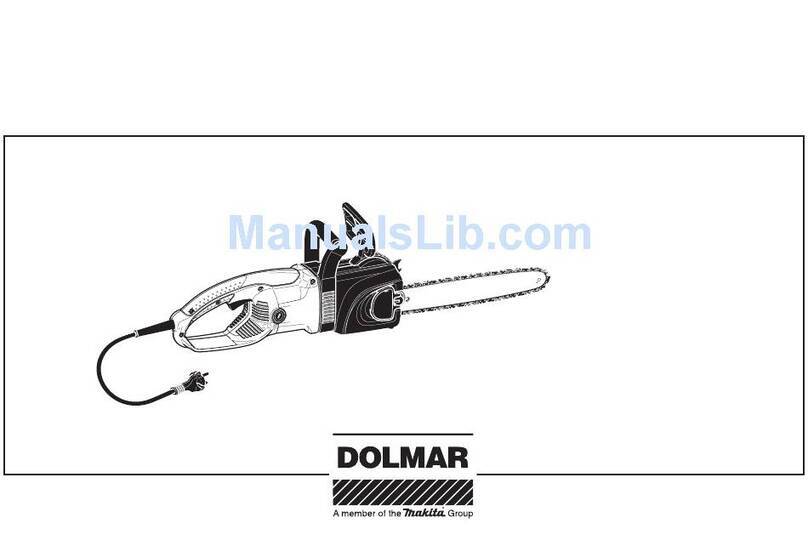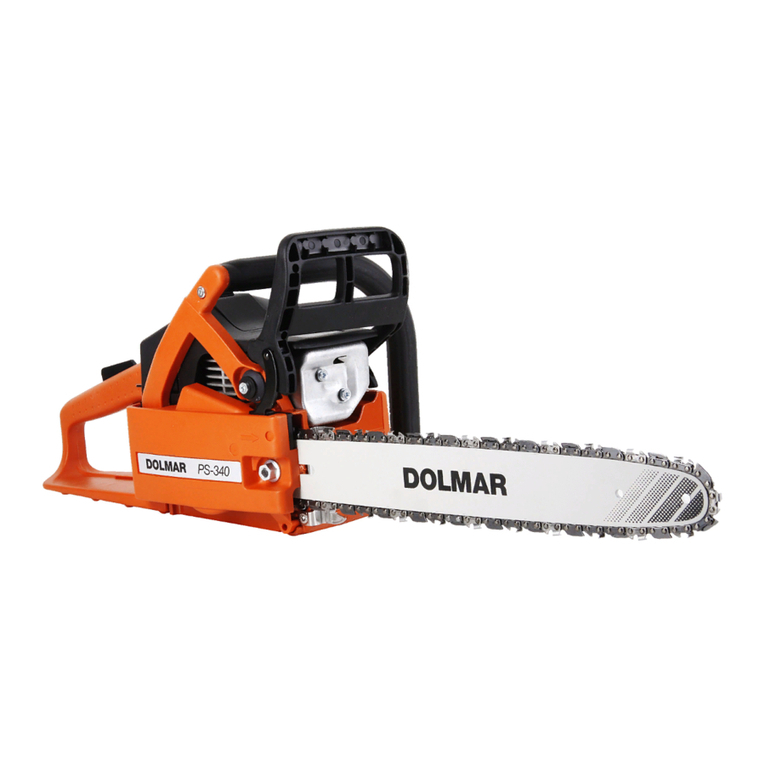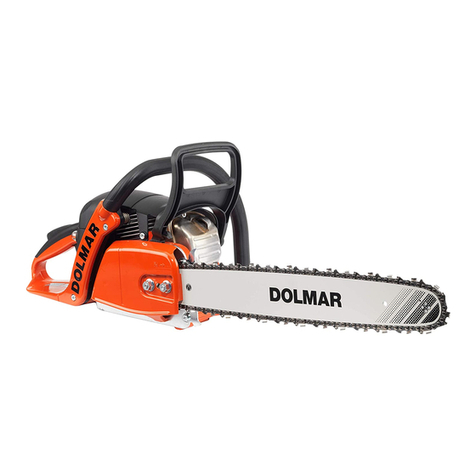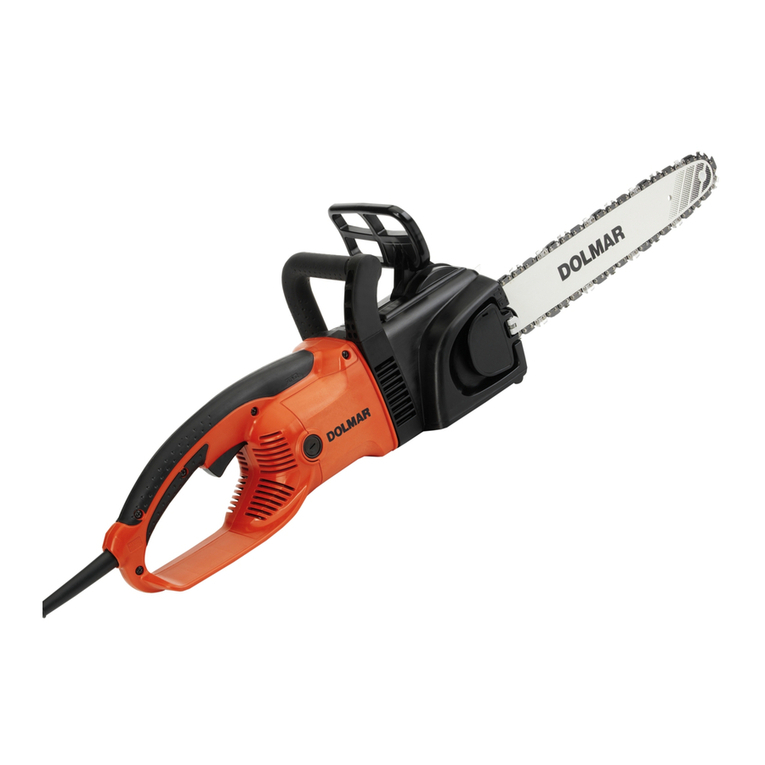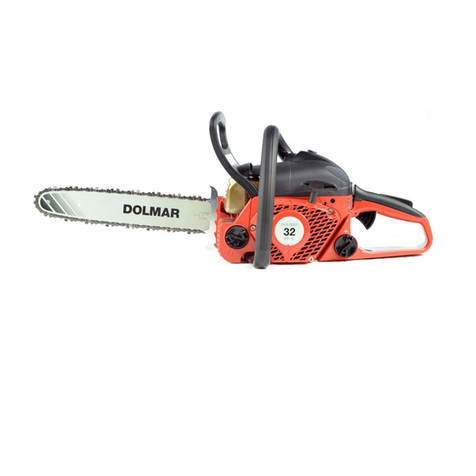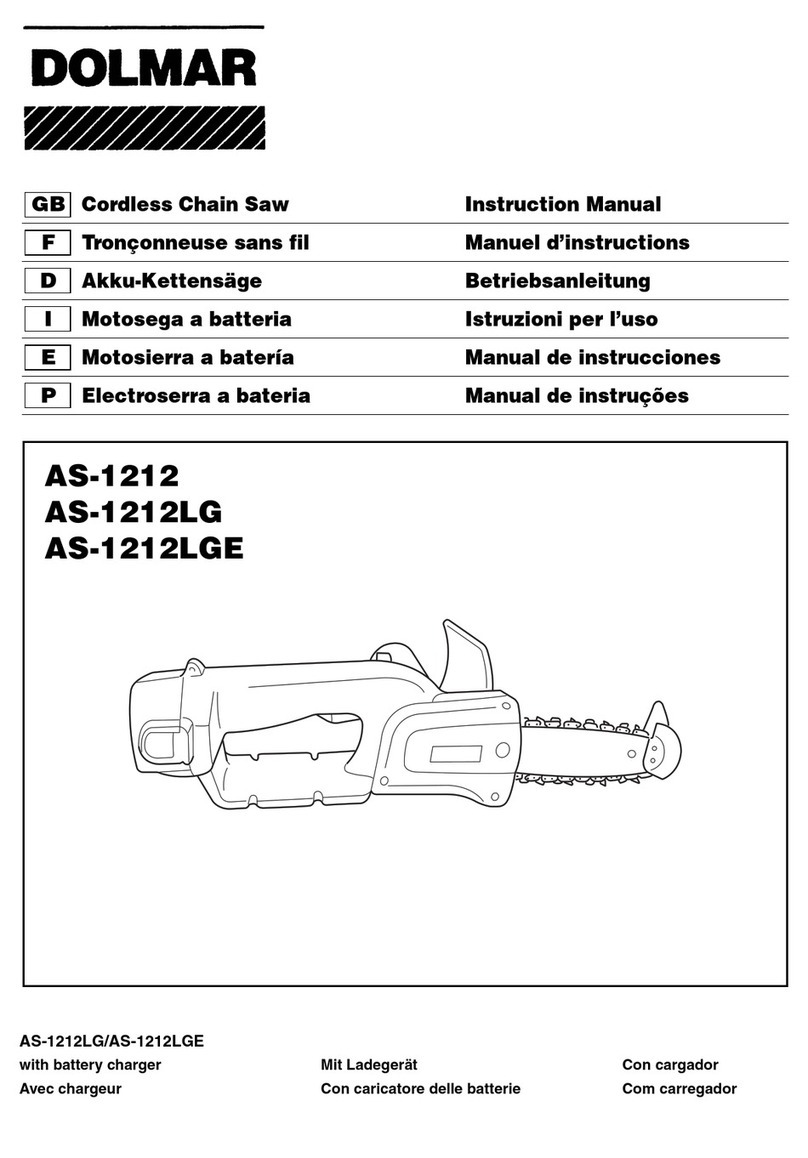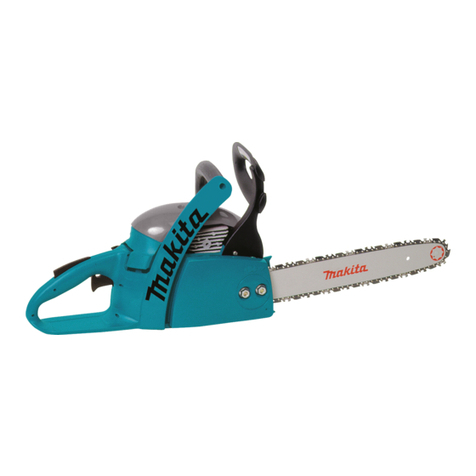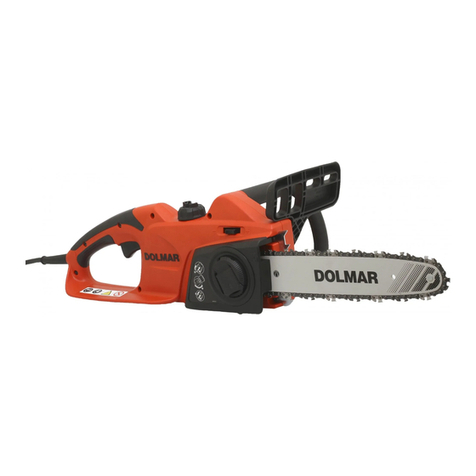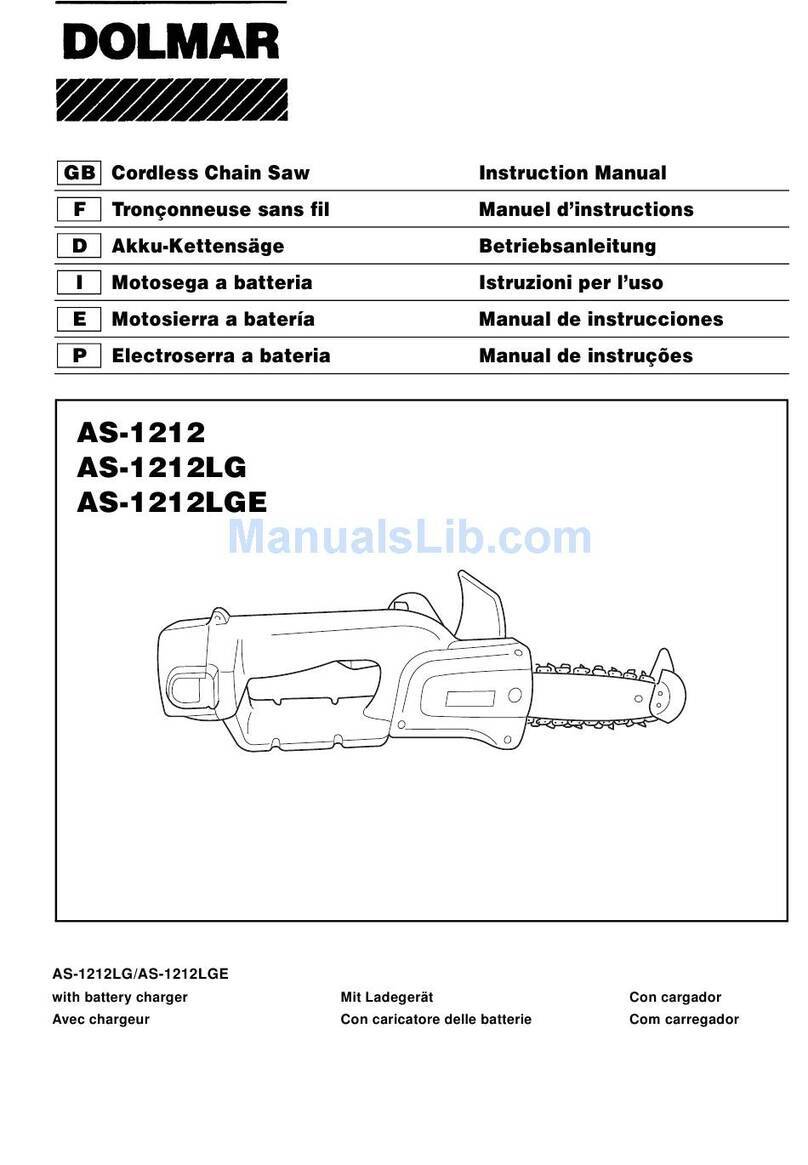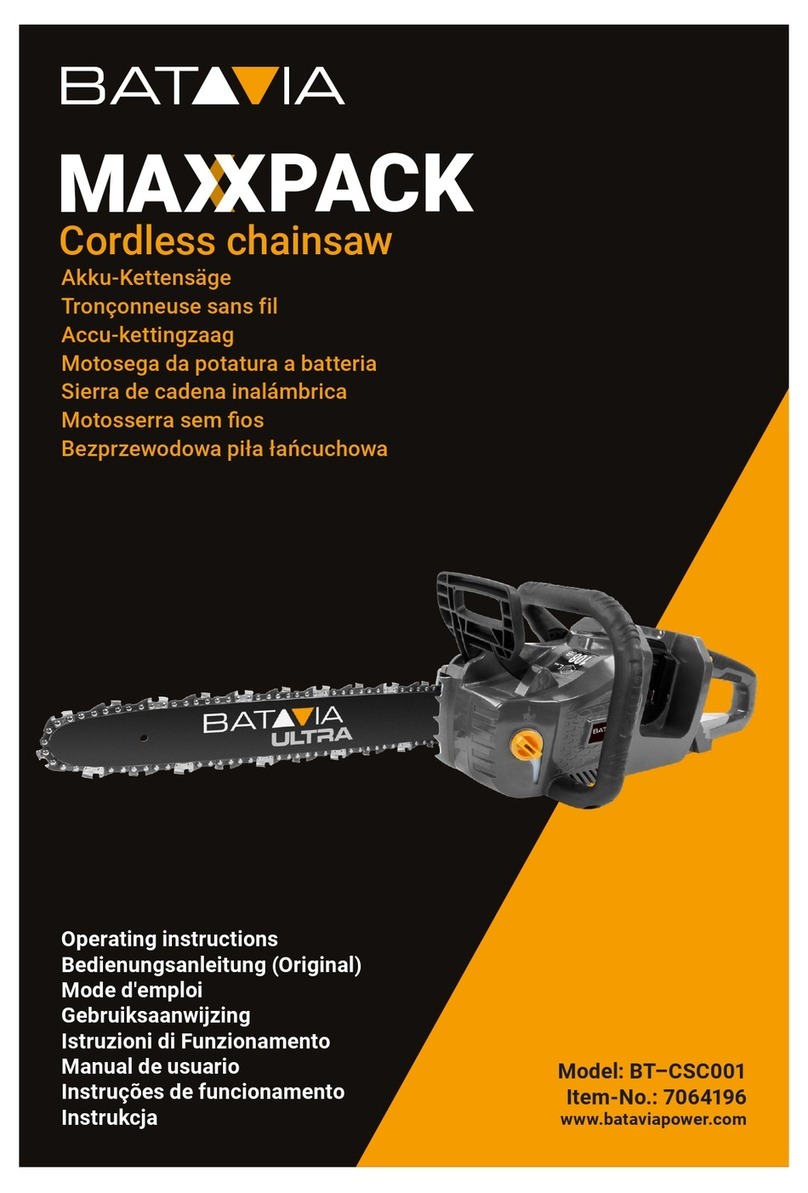
2
Table of contents Page
Packing ................................................................................2
Delivery inventory ..............................................................3
Symbols ..............................................................................3
SAFETY PRECAUTIONS
General precautions ....................................................... 4
Protective equipment ......................................................4
Fuels / Refuelling ............................................................5
Putting into operation ......................................................5
Kickback .........................................................................6
Working behavior/Method of working ...........................6-7
Transport and storage .....................................................8
Maintenance ...................................................................8
First aid ..........................................................................8
Technical data .....................................................................9
Denomination of components ...........................................9
PUTTING INTO OPERATION
Mounting the guide bar and saw chain .................... 10-11
Tightening the saw chain .............................................. 11
Chain brake .................................................................. 12
Fuels ........................................................................13-14
Refuelling ......................................................................14
Adjusting the chain lubrication ......................................15
Starting the engine ........................................................ 16
Cold start .....................................................................16
Warm start ....................................................................16
Stopping the engine....................................................... 16
Checking the chain brake .............................................17
Set idle speed .................................................................17
MAINTENANCE
Sharpening the saw chain .......................................18-19
Cleaning the brake band and sprocket interior .............20
Cleaning the guide bar, lubricating the sprocket nose ..20
Replacing the saw chain ...............................................21
Replacing the suction head .......................................... 21
Cleaning the air Þlter .....................................................21
Replacing the spark plug ..............................................22
Checking the ignition spark ........................................... 22
Instructions for periodic maintenance ...........................23
Service, spare parts and guarantee ..........................23-24
Troubleshooting ...............................................................24
Extract from spare parts list ...........................................25
Accessories ..................................................................25
Conformity Declaration ....................................................27
Thank you for purchasing a DOLMAR product!
Congratulations on choosing a DOLMAR chain saw! We are
conÞdent that you will be satisÞed with this modern piece of
equipment. As the world’s oldest manufacturer of chain saws
- we got our start in 1927 - we have the longest experience in
the industry. This experience shows in every detail of every
DOLMAR chain saw.
The PS-34, PS-45 are very handy and robust chain saws with
a new Design.
Theautomaticchainlubricationandmaintenance-freeelectronic
ignition ensure trouble-free operation, while the hand-saving
anti-vibration system and ergonomic grips and controls make
work easier, safer, and less tiring for the user.
The PS-34, chain saws are equipped with the latest safety
features and meet all international standards. These features
include: Hand guards on both handles, grip throttle lever lock,
chain catch, safety saw chain, and chain brake. The chain
brake can be actuated manually, and is also inertia-actuated
automatically in case of kickback.
The following industrial property rights apply: DE 19722629.
In order to ensure the proper functioning and performance
of your new chain saw, and to safeguard your own personal
safety, it is imperative that you read this instruction manual
thoroughly before operation. Be especially careful to ob-
serve all safety precautions! Failure to do so can result in
serious injury to the operator and/or bystanders!
Packing
The DOLMAR chain saw will be delivered in a protective card-
board box to prevent transport damage.
Cardboardisabasicrawmaterialandisconsequentlyreuseable
or suitable for recycling (waste paper recycling).
Benzin-Motorsäge
Chain Saw
Tronçonneuse à essence
Motosierra a gasolina


